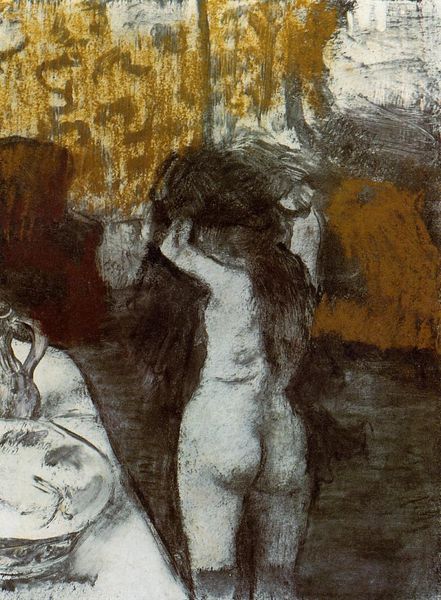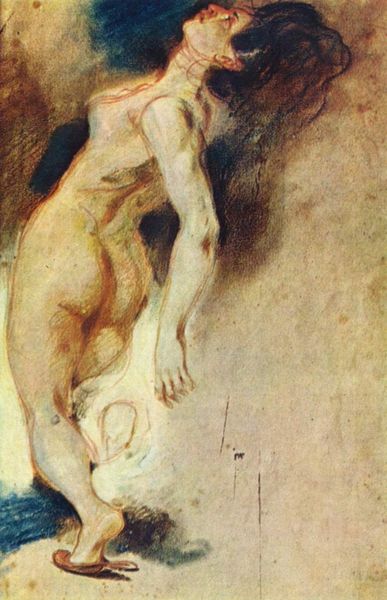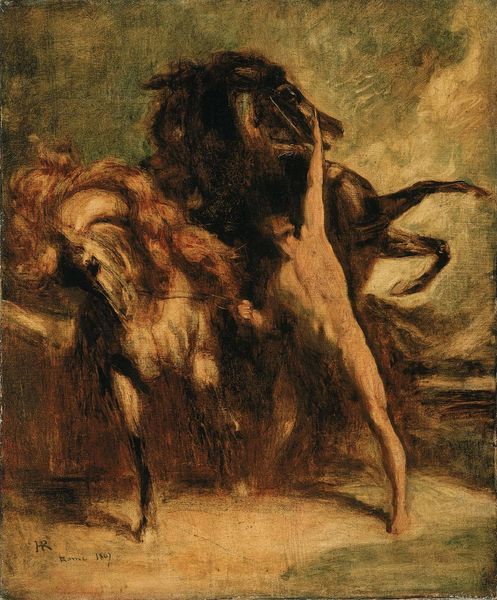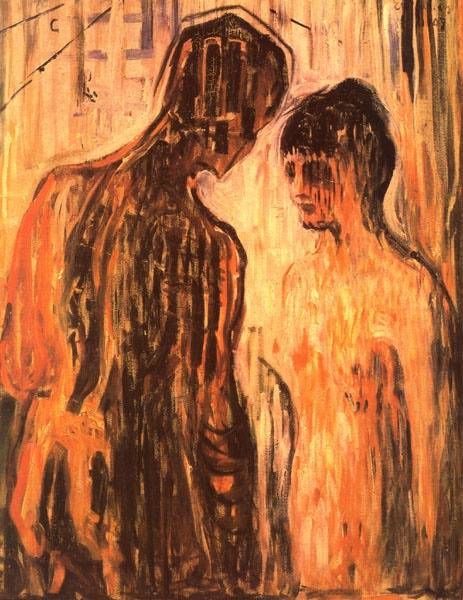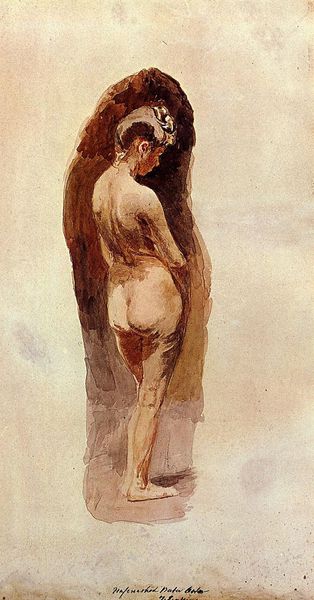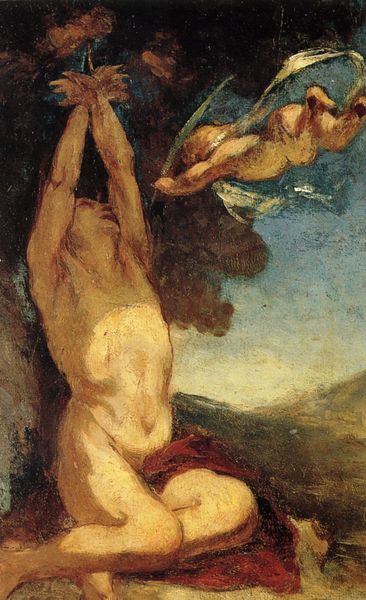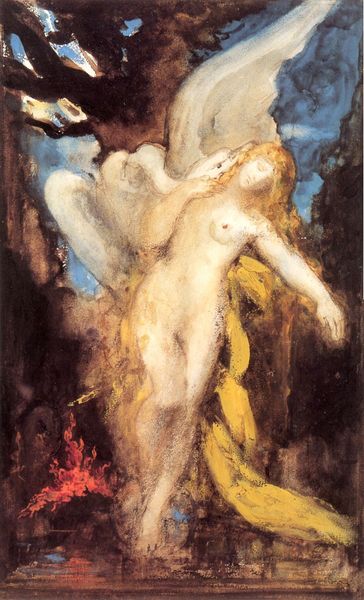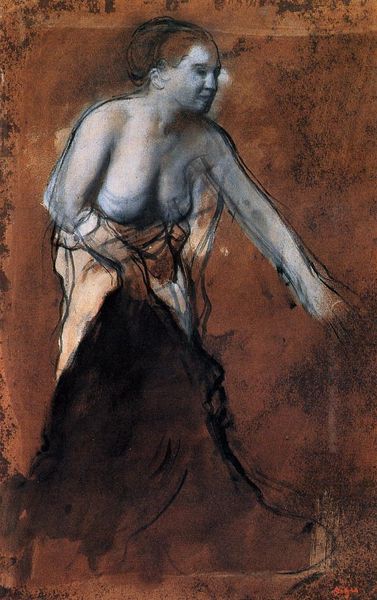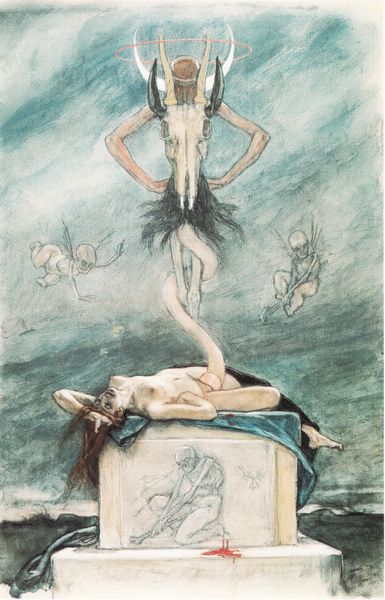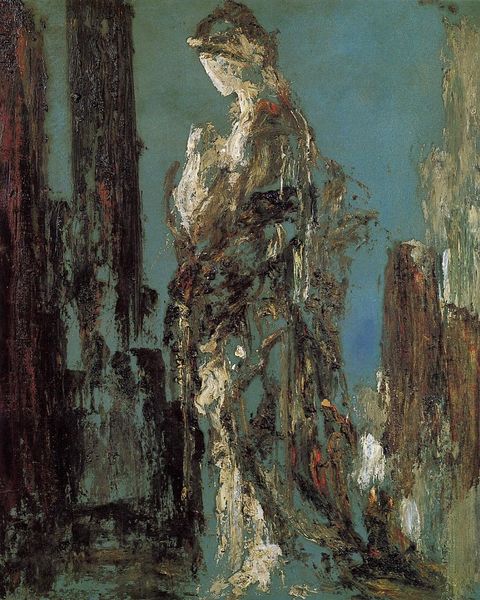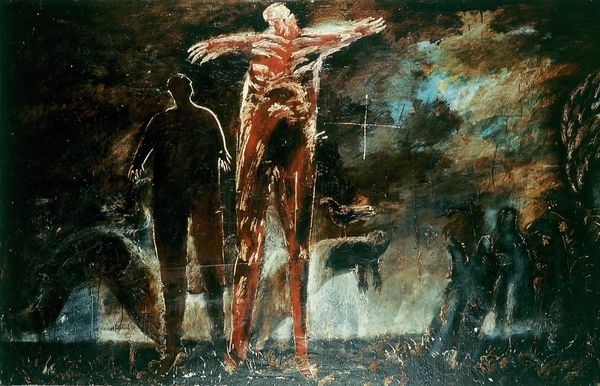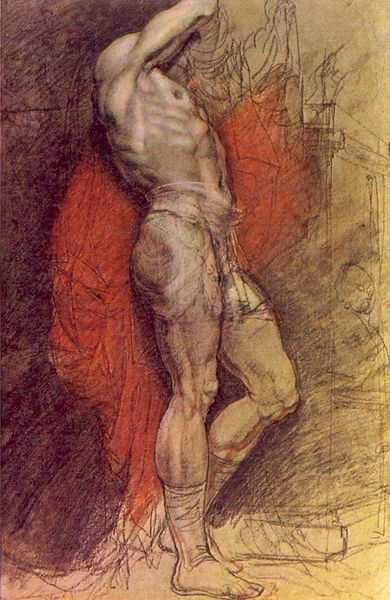
Dimensions: 80 x 63.8 cm
Copyright: Public domain
Editor: Right now, we're looking at Edgar Degas' "David and Goliath" from 1863. It's a charcoal drawing, and it really strikes me as raw and intense. The figures are almost violently sketched. What’s your interpretation of it? Art Historian: This drawing vibrates with potent symbols, doesn’t it? We’re familiar with David, the underdog who defeats Goliath, which often represents triumph over adversity. However, Degas gives us an uneasy David with his prize. Consider: What does it signify that Degas chose to portray this particular, unsettling moment after the battle? Editor: Hmm, interesting. So it’s less about the glorious victory and more about…the aftermath? The brutal reality? Art Historian: Precisely! It disrupts our typical understanding. What do you make of David’s almost disconnected pose, his averted gaze? Goliath's head looming above him? Editor: It feels…complicated. He’s victorious, but also burdened, maybe even disgusted by his own actions? And that charcoal just amplifies the tension...the stark light and shadow creating such an atmosphere of uncertainty. It is a classic story of good and evil. Could it be read as his personal commentary on something else that troubled him? Art Historian: Degas might be using David as a mirror, reflecting on internal battles or the cost of achieving power or fame. Images of victory often elide the sacrifices and psychic cost, an elision which has a strong tradition from antiquity through the Renaissance into his own period. This symbol reverberates throughout the history of art, often reinterpreting values of heroism, or what we may now view as moral compromise. Seeing it this way, what lasting effect does this interpretation give the image for you? Editor: Wow, I hadn’t thought of it like that before. Now I’m seeing so many layers of meaning in this one drawing. Thanks! Art Historian: My pleasure. It’s amazing how a familiar story, through insightful visual choices, can become so profoundly unsettling.
Comments
No comments
Be the first to comment and join the conversation on the ultimate creative platform.
